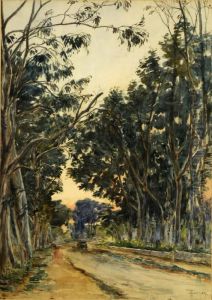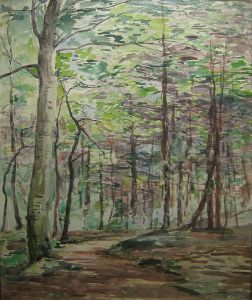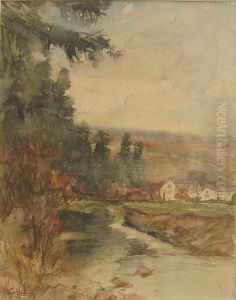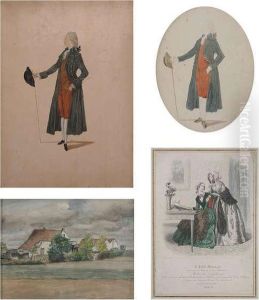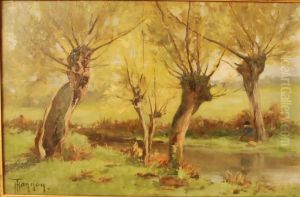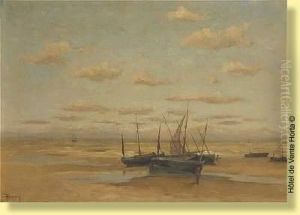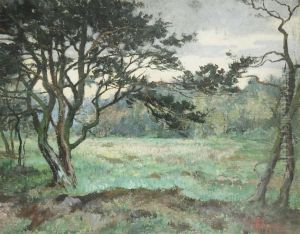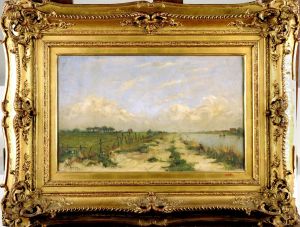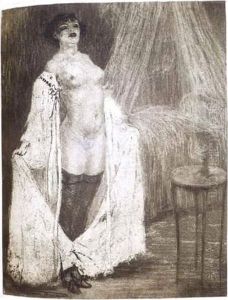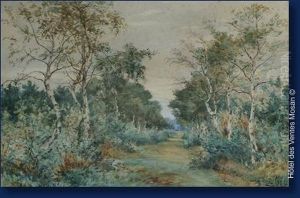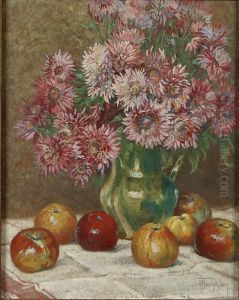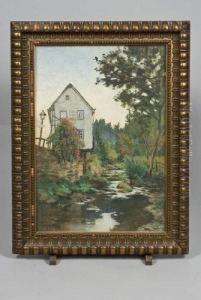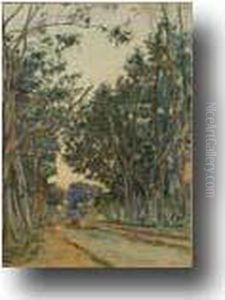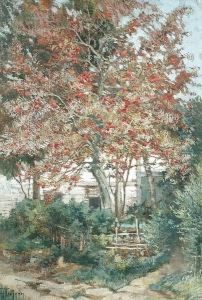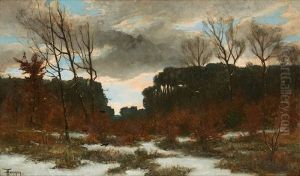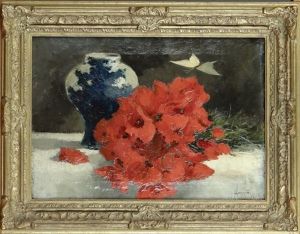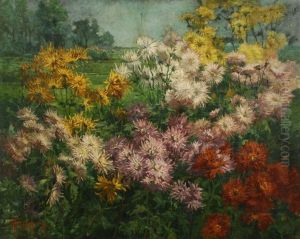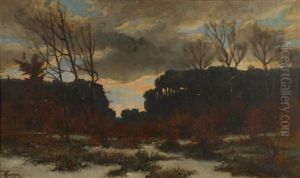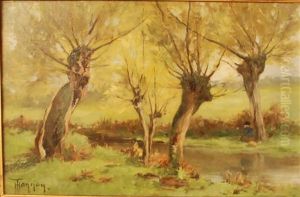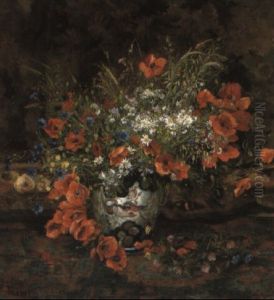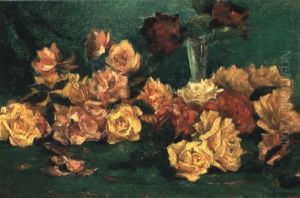Theodore Hannon Paintings
Theodore Hannon, born in 1851 in Brussels, Belgium, was a multifaceted artist known primarily for his contributions as a poet and painter. He emerged during a period of rich artistic innovation, aligning himself with the Symbolist movement which sought to express the mystical and emotional aspects of human experience beyond the visible world. Hannon's work, both in literature and in visual arts, is characterized by its lyrical quality, intricate symbolism, and often, a deep exploration of sensuality and the human psyche.
During his lifetime, Hannon was closely associated with other prominent figures of the Symbolist movement, including the poets Stéphane Mallarmé and Paul Verlaine, drawing inspiration from their use of symbolism to explore themes of dreams, visions, and the inner realms of the mind. His artistic endeavors were not limited to painting and poetry; he was also involved in the early stages of the Art Nouveau movement, which sought to break down the barriers between the fine arts and applied arts, and to infuse beauty into everyday objects.
Despite his contributions and collaborations, Theodore Hannon remained somewhat on the periphery of the major artistic movements of his time, never fully receiving the recognition he deserved during his lifetime. His work was often overshadowed by that of his contemporaries, and it was only posthumously that his contributions to both Symbolism and Art Nouveau began to be reevaluated and appreciated for their intrinsic beauty and emotional depth.
Hannon's poetry, much like his paintings, is filled with evocative imagery, exploring themes of love, despair, and the quest for beauty in a rapidly changing world. His visual art, on the other hand, is noted for its vibrant colors, intricate detail, and a certain dreamlike quality that transports the viewer to a realm beyond the mundane.
Theodore Hannon died in 1916, leaving behind a legacy that has since been rediscovered and celebrated in the realms of both poetry and painting. Today, he is regarded as a significant, though underappreciated, figure in the Symbolist movement, with his works offering a fascinating glimpse into the transition period between traditional and modernist art forms in the late 19th and early 20th centuries.

